- Blog
- 6 Ways to Help Your Students Deal With Peer Pressure
6 Ways to Help Your Students Deal With Peer Pressure
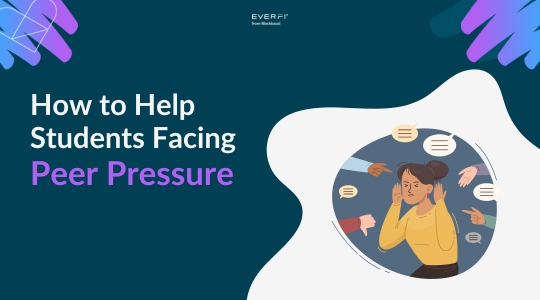
Peer pressure occurs when a person — often a young person — is influenced by their friends or other members of their social group to act in a certain way. Both positive and negative peer pressure exist, and many students experience both types of peer pressure regularly.
When a student experiences positive peer pressure, they’re influenced to behave in ways conducive to their well-being, such as studying for a test or trying out for a team. When a student experiences negative peer pressure, they’re influenced to behave in ways that negatively affect their lives, such as smoking, drinking, or bullying.
Research shows that 90% of teens experience peer pressure at some point. Educators and students alike need to recognize the signs of peer pressure and understand appropriate coping mechanisms. Here, we’ll also discuss how teachers can identify and help students struggling to maintain their values in the face of negative peer pressure.
Main Takeaways
- 90% of students report facing peer pressure at some point in high school.
- Peer pressure can be positive or negative, so it’s essential to encourage students to put themselves in scenarios where they routinely face positive “pressure.”
- There are several strategies teachers or parents can employ to prevent their children/students from facing negative peer pressure or at least learn how to resist that peer pressure.
Peer Pressure Statistics
Current research on peer pressure shows that:
- 90% of students report facing peer pressure at some point in high school.
- 70% of students who smoke started due to peer pressure.
- 55% of teens who use drugs report that they did so due to peer pressure.
- When teens view favorable photos of teens drinking on social media, they’re three times more likely to try alcohol.
Thankfully, research also shows that positive peer pressure can be a good thing for teens, according to a 2011 study at Harvard University.
Common Scenarios Where Students May Face Peer Pressure
Peer pressure is widespread. As an educator, it’s essential to be aware of everyday situations that may result in your students feeling pressured by others to participate in behaviors that aren’t aligned with their values or goals.
Common peer pressure scenarios that students face include:
- Student relationships: Students who are in romantic relationships may feel pressured by their partner, their friends, or their partner’s friends to participate in physical intimacy despite feeling uncomfortable.
- Bullying: Even though bullying is an often-talked-about issue, preventing bullying at school can be hard. Students who are bullied may feel pressured into giving up hobbies, interests, or friends.
- Drugs and alcohol: 60% of American teens admit to drinking alcohol at least one time before they turn 18. Teens often try to shield themselves from being labeled as an outcast, and drinking can feel like a ticket to the “in” crowd. Pressure to drink or use drugs can be indirect (for example, seeing that students who drink are invited to more social gatherings) or direct (another student offering them alcohol). Alcohol abuse prevention courses may help students stand up to pressure to drink.
- Academic dishonesty: An analysis of research on academic dishonesty showed that students are far more likely to cheat when they think others are cheating. In addition to feeling indirect pressure to cheat to keep up with others, students can also feel pressure to assist others by sharing their work.
- Rule breaking: Both at home and at school, teens can be negatively influenced by their peers to break the rules. During my time as a 6th-grade teacher, I often noticed students encouraging others to forge hall passes, steal small items, and break other classroom rules. Often, students who were known for struggling behaviorally pressured students desperate for a chance to fit in, knowing that they’d have more success getting them to break the rules.
Positive vs. Negative Peer Pressure
Social pressure has a major impact on student decisions, and thankfully, it can go a long way when it comes to nudging students in the right direction.
Positive Peer Pressure
- Working an after-school job. Friends with an after-school job may encourage their peers also to find a part-time job. When students see their peers earning money and gaining work experience, they may be more likely to realize they can do the same. Students may also be interested in gaining employment at a business where they can spend time working alongside their friends.
- Encouraging others to stick with positive hobbies, like sports or art. It’s easy to get discouraged when learning a new hobby. When a friend or older peer recognizes a student’s hard work and encourages them to stick with it, they may feel more motivated to stay the course.
- Standing up to bullies. Often, students know that bullying is wrong but hesitate to speak up out of fear that they may become the next target. When students see a peer stand up to a bully, they know that they’re not alone in feeling uncomfortable with bullying and may feel more inclined to speak up the next time they witness bullying behavior.
- Being honest with teachers and parents. Honesty is tough, and it can be tempting for teens to take the easy way out by lying to their parents or teachers about difficult subjects. Friends who encourage one another to tell the truth can provide the confidence necessary to be honest.
- Getting mental health support. It’s estimated that one in five teens live with at least one mental health disorder. When friends check up on each other and encourage one another to get mental health help when necessary, it can take away some of the stigma and nervousness that may come with talking to a therapist or counselor.
- Encouraging inclusivity. When students encourage inclusivity, rather than leaving others out of their friend group, other students may feel more comfortable doing the same, creating a positive, welcoming culture.
- Encouraging each other to drink both at school and outside of school. While teen drinking is at a historic low, it’s still a prevalent issue — nearly 15% of students ages 16–17 drink alcohol. Students who don’t want to drink may feel socially ostracized if they abstain and may give in to peer pressure if they see that their circle of non-drinking friends is dwindling.
- Acting like they don’t care about school. Succeeding at school requires taking risks — and, sometimes, making mistakes. Often, students prefer to act like they don’t care about school because it’s difficult or because they’re afraid to fail. When apathy is “in,” students may feel self-conscious about giving school their best effort, especially when their peers are watching.
- Bullying other students. Often, it feels easier for students to join in with a bully than stand up for the student being bullied, especially in front of their peers.
How to Recognize When a Student Is Facing Negative Peer Pressure
Sometimes, peer pressure seems obvious. Teachers may notice that a student is visibly struggling to do the right thing while being egged on by their peers, or they may notice behavioral changes that go hand in hand with joining a new friend group. Other times, signs of negative peer pressure are more subtle. Paying close attention to student attitudes, behaviors, peer interactions, and academic performance changes can help you understand whether they may be struggling.
Common signs that a student may be dealing with negative peer pressure include:
- Declining academic performance
- Sudden changes in energy levels
- Low moods and high stress levels
- Always tired
- Attempts to copy another student’s negative attitude
- Decreased motivation, including reluctance to participate in class
- Showing signs of drug/alcohol addiction
- Anti-social behavior
- Extreme attention to the behaviors and opinions of their desired peer group
6 Ways to Help Students Deal With Peer Pressure
As a teacher, it’s important to help students understand how to deal with peer pressure. Managing classroom dynamics is one of the most complex parts of the job, and dealing with peer pressure adds extra pressure to both teachers and students. Thankfully, there are many peer pressure activities to help students resist negative influences. Let’s look at some ways teachers can help students learn how to resist peer pressure.
-
Encourage Students With Similar Interests to Work Together on Class Projects
When teachers notice a student struggling with negative peer pressure, it can be helpful to pair them up with a new-to-them group, allowing them to take a step back from negative influences. Making new friends and developing healthy relationships are some of the simplest ways to resist peer pressure.
For example, if a student is trying to fit in with a group that projects an attitude of apathy about school, pairing them up with a student with similar interests and a similar academic drive can help them regain their focus.
Lindsey McAnnaney, a Pennsylvania art teacher and mom, credits her teen daughter’s positive friend group with keeping each other on track. “She and her friends talk about the ‘popular group’ known to show negative behaviors, but they aren’t influenced by these behaviors,” Lindsey said. “Due to the support of this group, she has avoided getting into trouble academically and socially throughout middle school.”
-
Build Self-Esteem
Celebrating student successes can help provide them with the confidence they need to stand up to negative peer pressure. Narrating the positive in a classroom can provide positive peer pressure, as other students see students being celebrated for doing the right thing and help build student self-esteem. Making positive phone calls to parents, displaying excellent student work, and celebrating student growth can also help boost self-esteem.
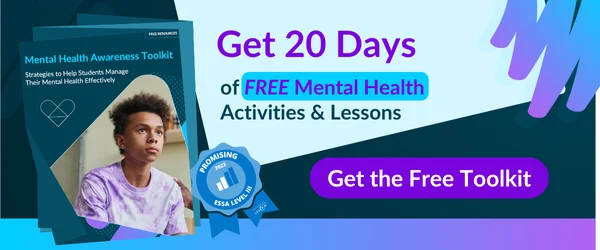
-
Encourage Students to Join After-School Programs or In-School Clubs
The benefit of participating in extracurriculars is twofold when it comes to peer pressure: Students may get the positive pressure they need to excel, and they may gain the confidence required to stay strong in the face of negative peer pressure.
Alicia Betz, a 10th-grade English teacher in Pennsylvania, noticed a change in one of her students after his friends encouraged him to begin participating in school sports.
“My student’s best friend kept asking him to join track, but he was unsure. After he finally joined the team, I noticed a marked change in his overall well-being. He seemed to have better peer relationships, which led to an improvement in his overall mental health,” Betz said.
-
Teach Decision-Making Skills
According to Harvard Business Review, adults make about 34,000 decisions each day. Due to a lifetime of learning, 95% of these decisions take place in our subconscious mind. Students are still working through learning how to make effective decisions, and providing guidance on healthy decision-making can help them do the right thing when peer pressure rears its head.
Think-alouds — speaking through the cognitive processes so that students can get a clear view of a teacher’s thoughts — can be helpful when it comes to teaching decision-making. Discussing hypothetical social situations that students might encounter as a class can also provide students with the framework they need to respond positively when they’re hit with peer pressure.
-
Set Boundaries in the Classroom — and Stick to Them
When students see teachers doing what they say they’re going to do, it can help inspire them to have the confidence to do the same. Sticking to class and school rules, even when no one appears to be looking, can help push students to do the right thing.
-
Let Students Know You’re There to Help
It can be tough for students to figure out who to turn to when things get tough, and letting them know that teachers are there to offer a listening ear can help. Letting students know they’re available when they’re struggling may help them pause when they’re faced with a tough decision. They’ll know they can ask how to avoid peer pressure or making a choice that could negatively affect their future.

Want to Share These Principles With Your Students? Explore Everfi’s Free Digital Courses!
You want to prepare your students for success in their careers and in their lives, and we’re here to help! Check out our forever-free digital lessons on character education courses for K-12 students that are designed to help students learn real-world skills with fun, game-based lessons that prepare your students for the future.
Free for K-12 Educators
Thanks to partners, we provide our digital platform, training, and support at no cost.
See why 21K schools use Everfi.
Share 4 weeks of free resources with these teacher toolkits:

Amanda Berkey is a Pennsylvania-based writer and reporter with an M.S.Ed. in School and Mental Health Counseling. With 17 years of experience in education, she has taken on diverse roles in teaching, coaching, and administration.
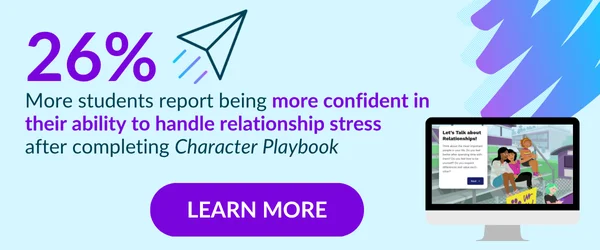
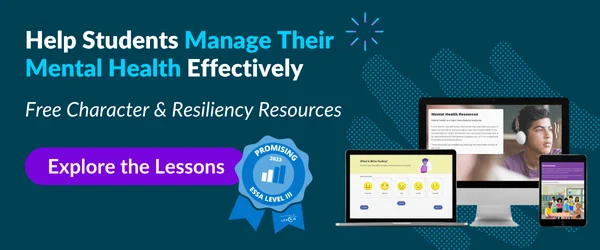
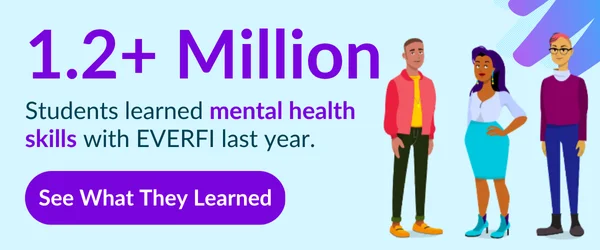
!["[Everfi] has been a game changer for us, and our main intervention for student infractions." -District Administrator - Irvine Unified School District, CA](/wp-content/uploads/2025/09/Quote_Prevention_Game-Changer-1.webp)